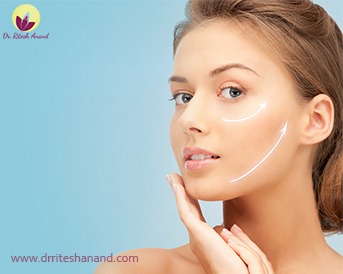Expectations after a Facelift

Facial ageing is an inevitable phenomenon which cannot be reversed but it can certainly be slowed and improved to a reasonable extent. The causes of facial ageing are mainly loss of volume of the face, tissue descent due to the gravity and textural changes in the skin. Not all faces age in the same way, nor do they require the same procedure for facial rejuvenation. The modalities to improve facial ageing can be Nonsurgical & Surgical.
A Facelift is a cosmetic procedure that helps in giving a more youthful appearance to the face and neck for patients older than 40 years.The good candidates for facelift are healthy individuals having signs of facial ageing and who do not smoke and have a realistic expectation about this Cosmetic Surgery in Delhi.
Facelift can tighten the loose hanging skin around the mouth and can soften the deep creases around the nose and mouth area. It can also remove skin & the excess fat hanging around the chin and neck to give a definition to the jawline and neck region.
The facelift confers another benefit that is more difficult to define. Aging results in jowls and a rectangular lower face. A facelift lifts the jowls back into the face, augmenting the upper face and narrowing the lower face, producing the “inverted cone of youth.” This change in overall facial shape from rectangular to heart-shaped is subtle but real, and is a benefit that no other treatment modality can provide .
Face lifting addresses only ptosis and atrophy of facial tissues.It does not address, and has no effect on, the quality of the facial skin itself. Consequently, facelifting is not a treatment for sun damage, creases, or irregular pigmentation. Various resurfacing modalities like Chemical Peeling , dermabrasions and other skin care treatment. Facelift also does not remove the labiomental crease completely and needs soft tissue fillers for correction.
In Spite of the above limitations, the facelift is the single most important and beneficial treatment for most patients older than age 40 years who wish to maximally address facial-aging changes. Facelift procedure can be done under local or general anaesthesia depending upon the patient’s requirement. During the surgery the drains are applied to drain any blood in the post op period.
Immeditaely after the surgery you may look a little swollen and bruised and a light dressing is applied over the face and neck region and the patient is advised antibiotics and pain killers. Patient can be discharged in the evening of the surgery or the next morning after removal of the drains and dressings. Patient is advised to take shower daily and apply an antibiotic ointment over the sutures. Patient is called on 5th day for the removal of the sutures. The swelling over the face of the patient starts to reduce over the next week and by the end of one month patient can fully appreciate the effects of facelift.